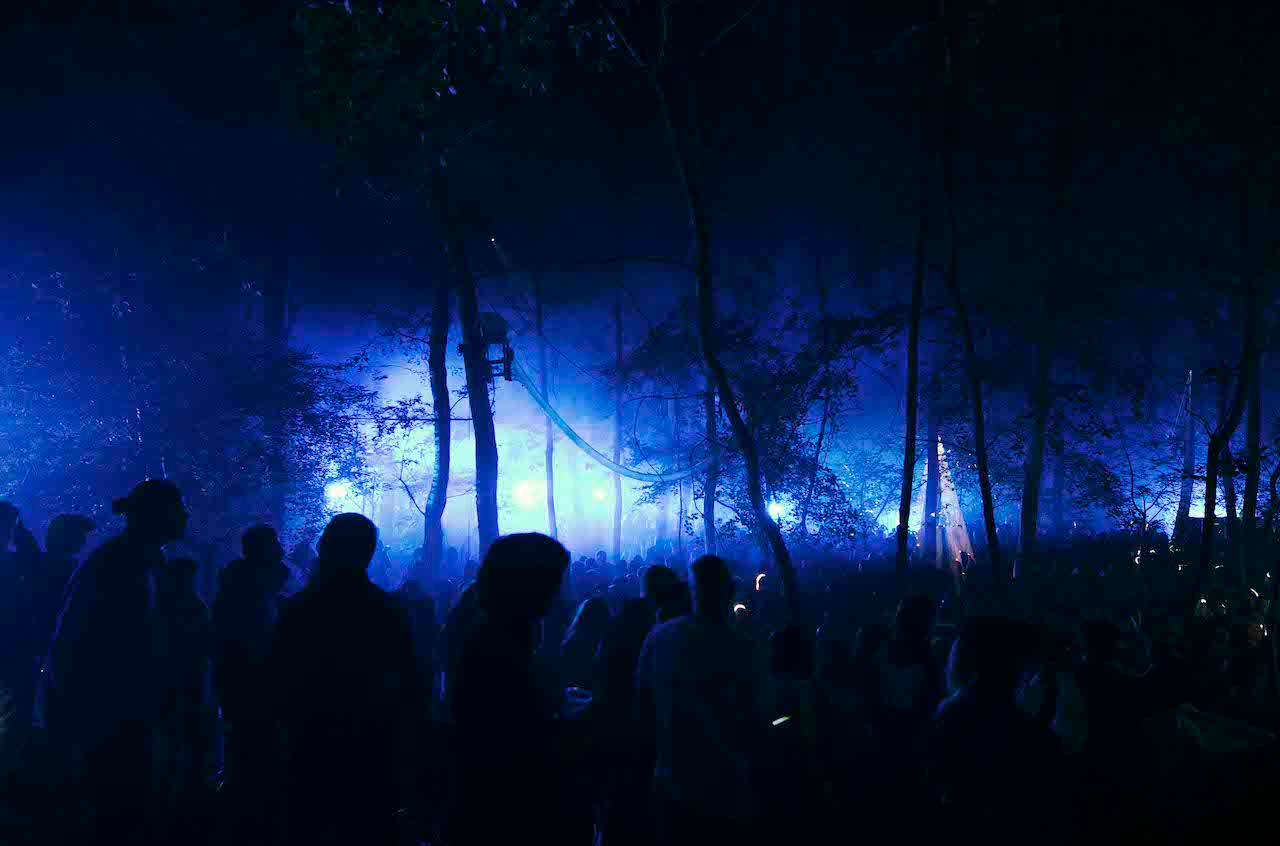- One day, six stages in the woods and more than 40 of the best dance music artists around. Katie Thomas investigates.
- In the days leading up to the sixth edition of Draaimolen Festival in Tilburg, Job Jobse was camping in the woods. In a post on Instagram, he and his pals were seen brandishing chainsaws, driving tractors and generally helping to bring the event to life. This was Jobse's third year playing Draaimolen, and the second at which his party, Strangelove, has co-hosted two stages.
On a quest to find the perfect home, Draaimolen has moved four times in six years. 2019 meant another new site, MOB Complex, a forest to the north of Tilburg that used to be an ammunition depot. The site recalls intimate UK festivals like Lost Village and Houghton, with stages tucked away in the woods, but with the added sophistication of Dekmantel. There was a strong focus on design site-wide, with artists commissioned to help produce each of the six stages. Aura, designed by Christian Starz, was inspired by "terrain, waves and melting orbits." The Chapel, by Heleen Blanken, focused on the union of sacred architecture and the natural world. Barker's live set there, full of shimmering techno with no kick drums, was soaked up by punters sitting on the grass.
This year's edition welcomed around 13,000 people to MOB Complex, many of them locals, sporting everything from R&S merch to Ariana Grande tour sweatshirts. During the day, everything ran like clockwork, with minimal queuing and crystal-clear sound on every stage. But after dark, the site was poorly lit. The festival should remedy this—were it not for the full moon, we would have been falling over each other between stages.
Strangelove 1 was a huge crater dug into the ground. A homage to The War Of The Worlds, it featured cranes clasping lighting rigs in their claws. The sunken dance floor only had two entrances, which led to occasional overcrowding (Job Jobse's set succumbed to this), but once inside, both the booth and the hefty speaker stacks were in the middle of the crater, resulting in a 360-degree dance floor with banging surround sound. At night it became an intense, smoky rave pit—in other words, the perfect place to see Objekt and DJ Stingray's raucous back-to-back, the pair delivering high-octane techno and analogue electro cuts like "Shake It Baby" by Mr De'. Marie Davidson followed, though, unfortunately, the crowd thinned. Save for a sharp, sardonic rendition of "The Psychologist," her voice sounded more gravelly than usual, perhaps unsurprising after a hectic tour schedule. At one point, she said with a shrug, "it's hard to follow Objekt and Stingray!"
Mainstage, a sprawling, wood-panelled dance floor, was always easy to negotiate, though its size meant that the crowd sometimes felt disengaged. During Midland's set, as someone waved branches in the air, I was again reminded of Houghton. He was on fine form, reaching for favourites like Thomas Bangalter's "What To Do" and Bleaker's "Hype (Funk)." He played in front of a semicircle of swivelling mirrored panels, which reflected the milky sky and the surrounding trees back to the dance floor. As night fell, the stage's aesthetic changed. Four Tet's closing set was illuminated by electric blues and greens, LEDs flashing geometric shapes around the glass panels, the forest behind him glowing purple. As a smoky haze settled over the crowd, he worked through tracks by Barker ("Utility" was the day's most-heard tune), Floating Points and Schacke. I also heard his own "Anna Painting" out for the first time, the melody chiming across the dance floor as the moon glowed through the trees.
The jewel in Draaimolen's crown was Strangelove 2. Designed by Nikki Hock and Joeri Woudstra, two artists from The Hague who also helped conceptualise Strangelove 1, the stage paired a dance floor in the woods with a huge screen displaying psychedelic visuals. The inspiration was rave as a political tool, which made Eris Drew the perfect booking. She delighted the afternoon crowd with feel-good cuts like "Up To No Good (DJ Quicksilver Remix)" by Porn Kings and Wildchild's "Let Me Tell You."
Draaimolen's lineup was brilliant to the point of overwhelming—the choice of headliners included Four Tet, Marcel Dettmann, Helena Hauff, Objekt & Ezra Miller and John Talabot. The festival has always been a one-day event (their 2014 debut, headlined by Jeff Mills, had just 12 artists on the bill), but, moving forward, maybe it could benefit from expanding its programme across a full weekend. If this year is anything to go by, let's hope they've found a permanent home in MOB Complex.
Photo credit /
Rafael Dimiioniatis
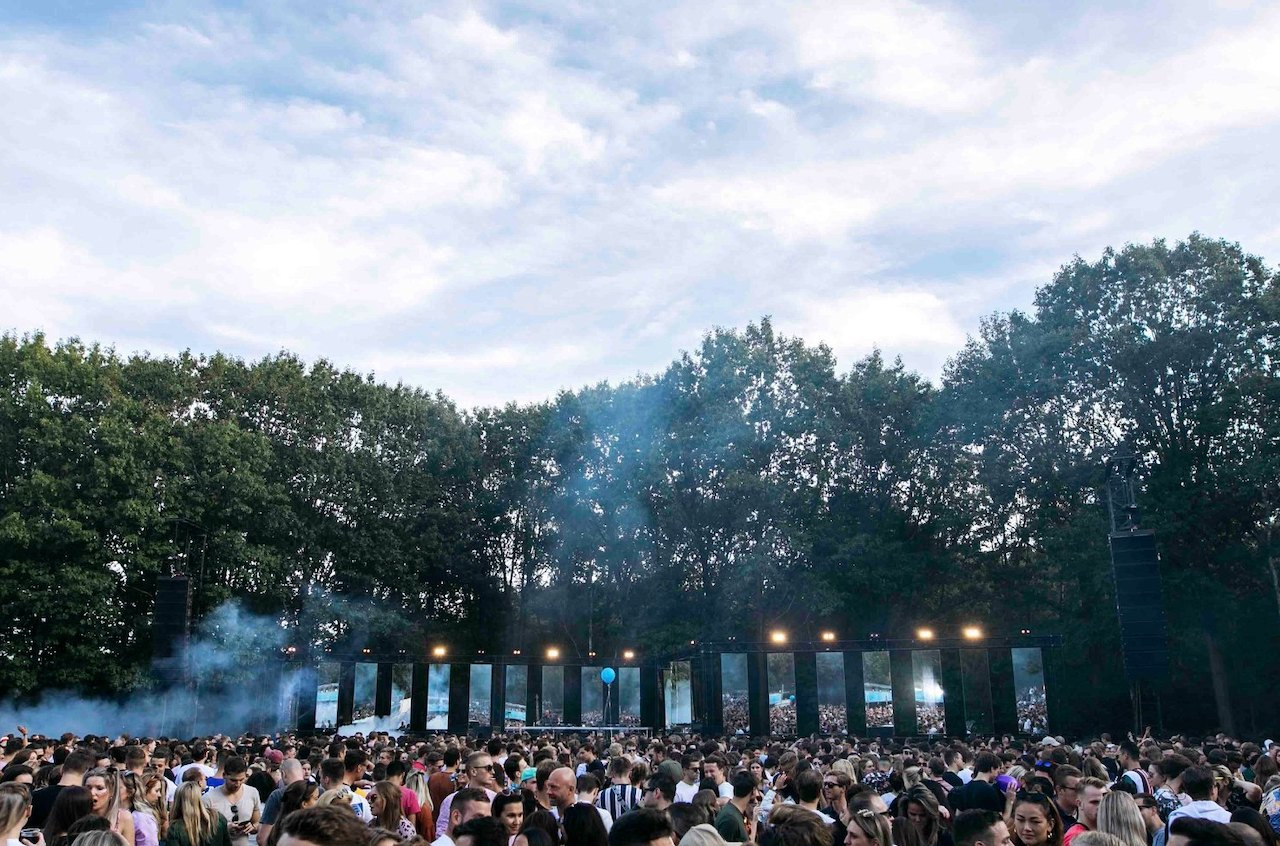 This year's edition welcomed around 13,000 people to MOB Complex, many of them locals, sporting everything from R&S merch to Ariana Grande tour sweatshirts. During the day, everything ran like clockwork, with minimal queuing and crystal-clear sound on every stage. But after dark, the site was poorly lit. The festival should remedy this—were it not for the full moon, we would have been falling over each other between stages. Strangelove 1 was a huge crater dug into the ground. A homage to The War Of The Worlds, it featured cranes clasping lighting rigs in their claws. The sunken dance floor only had two entrances, which led to occasional overcrowding (Job Jobse's set succumbed to this), but once inside, both the booth and the hefty speaker stacks were in the middle of the crater, resulting in a 360-degree dance floor with banging surround sound. At night it became an intense, smoky rave pit—in other words, the perfect place to see Objekt and DJ Stingray's raucous back-to-back, the pair delivering high-octane techno and analogue electro cuts like "Shake It Baby" by Mr De'. Marie Davidson followed, though, unfortunately, the crowd thinned. Save for a sharp, sardonic rendition of "The Psychologist," her voice sounded more gravelly than usual, perhaps unsurprising after a hectic tour schedule. At one point, she said with a shrug, "it's hard to follow Objekt and Stingray!"
This year's edition welcomed around 13,000 people to MOB Complex, many of them locals, sporting everything from R&S merch to Ariana Grande tour sweatshirts. During the day, everything ran like clockwork, with minimal queuing and crystal-clear sound on every stage. But after dark, the site was poorly lit. The festival should remedy this—were it not for the full moon, we would have been falling over each other between stages. Strangelove 1 was a huge crater dug into the ground. A homage to The War Of The Worlds, it featured cranes clasping lighting rigs in their claws. The sunken dance floor only had two entrances, which led to occasional overcrowding (Job Jobse's set succumbed to this), but once inside, both the booth and the hefty speaker stacks were in the middle of the crater, resulting in a 360-degree dance floor with banging surround sound. At night it became an intense, smoky rave pit—in other words, the perfect place to see Objekt and DJ Stingray's raucous back-to-back, the pair delivering high-octane techno and analogue electro cuts like "Shake It Baby" by Mr De'. Marie Davidson followed, though, unfortunately, the crowd thinned. Save for a sharp, sardonic rendition of "The Psychologist," her voice sounded more gravelly than usual, perhaps unsurprising after a hectic tour schedule. At one point, she said with a shrug, "it's hard to follow Objekt and Stingray!"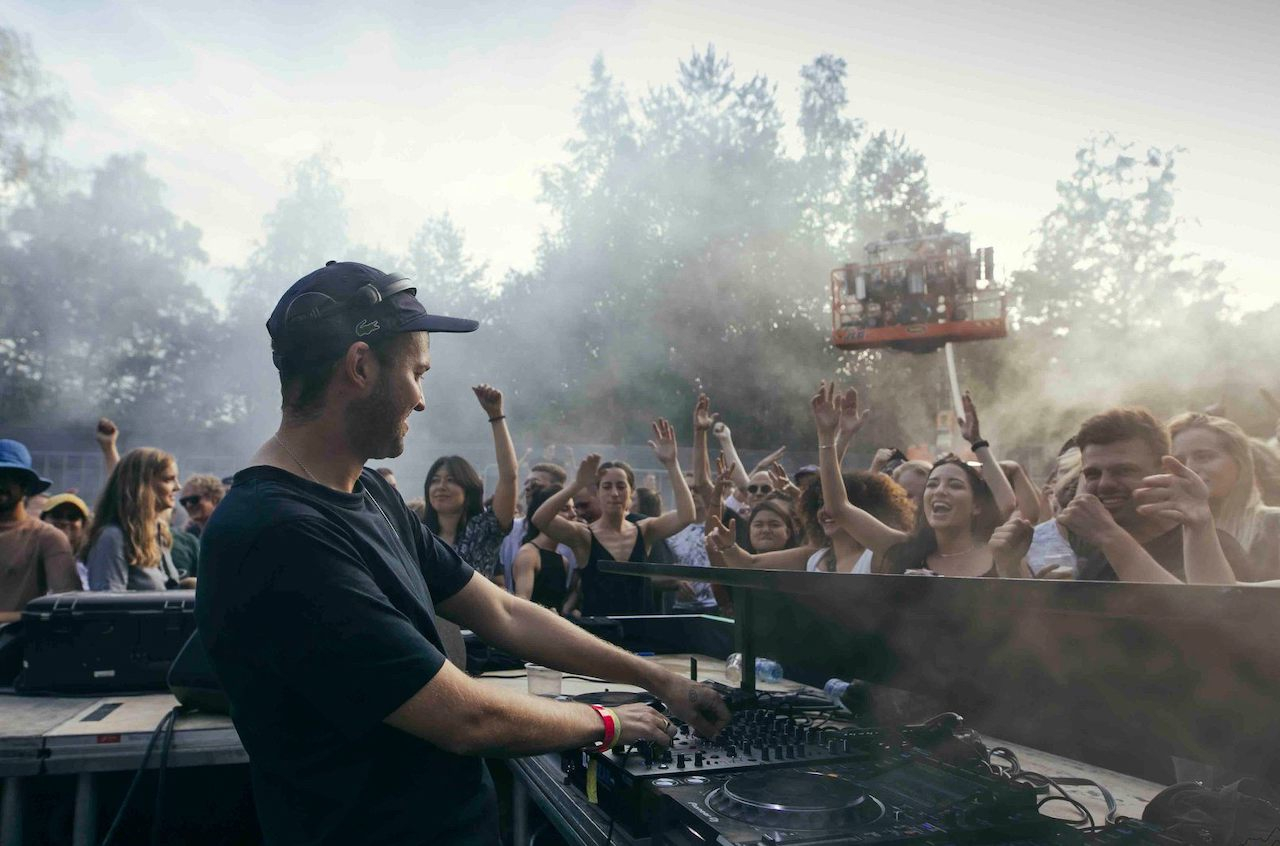
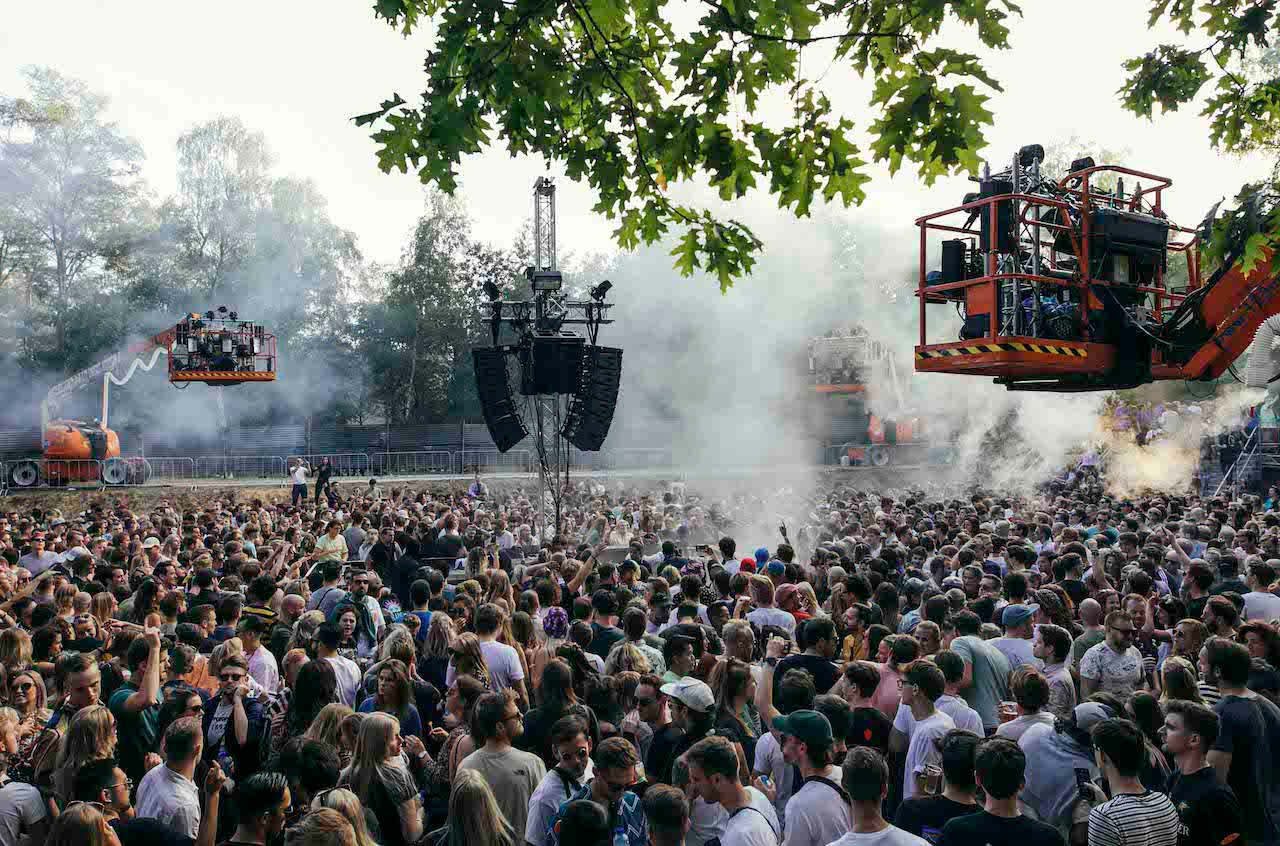 Mainstage, a sprawling, wood-panelled dance floor, was always easy to negotiate, though its size meant that the crowd sometimes felt disengaged. During Midland's set, as someone waved branches in the air, I was again reminded of Houghton. He was on fine form, reaching for favourites like Thomas Bangalter's "What To Do" and Bleaker's "Hype (Funk)." He played in front of a semicircle of swivelling mirrored panels, which reflected the milky sky and the surrounding trees back to the dance floor. As night fell, the stage's aesthetic changed. Four Tet's closing set was illuminated by electric blues and greens, LEDs flashing geometric shapes around the glass panels, the forest behind him glowing purple. As a smoky haze settled over the crowd, he worked through tracks by Barker ("Utility" was the day's most-heard tune), Floating Points and Schacke. I also heard his own "Anna Painting" out for the first time, the melody chiming across the dance floor as the moon glowed through the trees. The jewel in Draaimolen's crown was Strangelove 2. Designed by Nikki Hock and Joeri Woudstra, two artists from The Hague who also helped conceptualise Strangelove 1, the stage paired a dance floor in the woods with a huge screen displaying psychedelic visuals. The inspiration was rave as a political tool, which made Eris Drew the perfect booking. She delighted the afternoon crowd with feel-good cuts like "Up To No Good (DJ Quicksilver Remix)" by Porn Kings and Wildchild's "Let Me Tell You."
Mainstage, a sprawling, wood-panelled dance floor, was always easy to negotiate, though its size meant that the crowd sometimes felt disengaged. During Midland's set, as someone waved branches in the air, I was again reminded of Houghton. He was on fine form, reaching for favourites like Thomas Bangalter's "What To Do" and Bleaker's "Hype (Funk)." He played in front of a semicircle of swivelling mirrored panels, which reflected the milky sky and the surrounding trees back to the dance floor. As night fell, the stage's aesthetic changed. Four Tet's closing set was illuminated by electric blues and greens, LEDs flashing geometric shapes around the glass panels, the forest behind him glowing purple. As a smoky haze settled over the crowd, he worked through tracks by Barker ("Utility" was the day's most-heard tune), Floating Points and Schacke. I also heard his own "Anna Painting" out for the first time, the melody chiming across the dance floor as the moon glowed through the trees. The jewel in Draaimolen's crown was Strangelove 2. Designed by Nikki Hock and Joeri Woudstra, two artists from The Hague who also helped conceptualise Strangelove 1, the stage paired a dance floor in the woods with a huge screen displaying psychedelic visuals. The inspiration was rave as a political tool, which made Eris Drew the perfect booking. She delighted the afternoon crowd with feel-good cuts like "Up To No Good (DJ Quicksilver Remix)" by Porn Kings and Wildchild's "Let Me Tell You."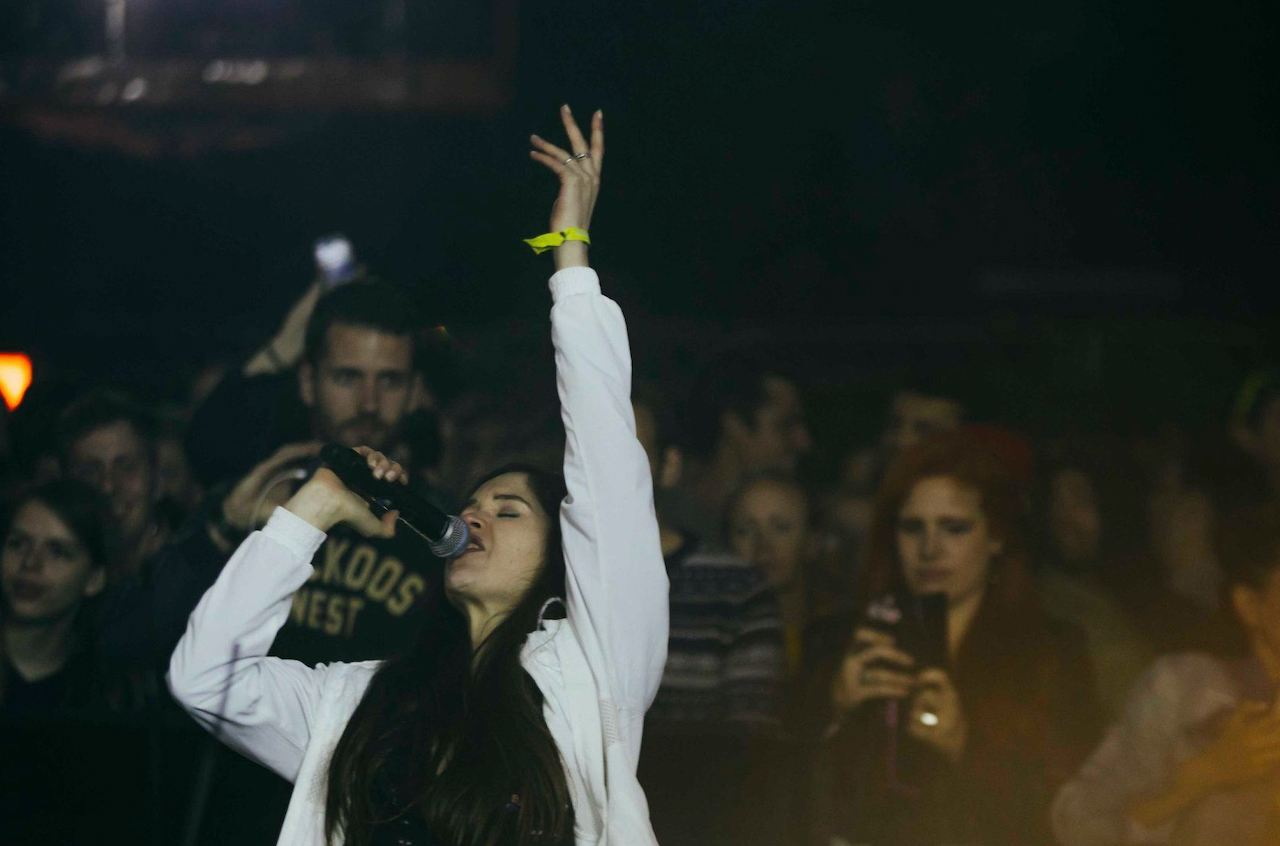
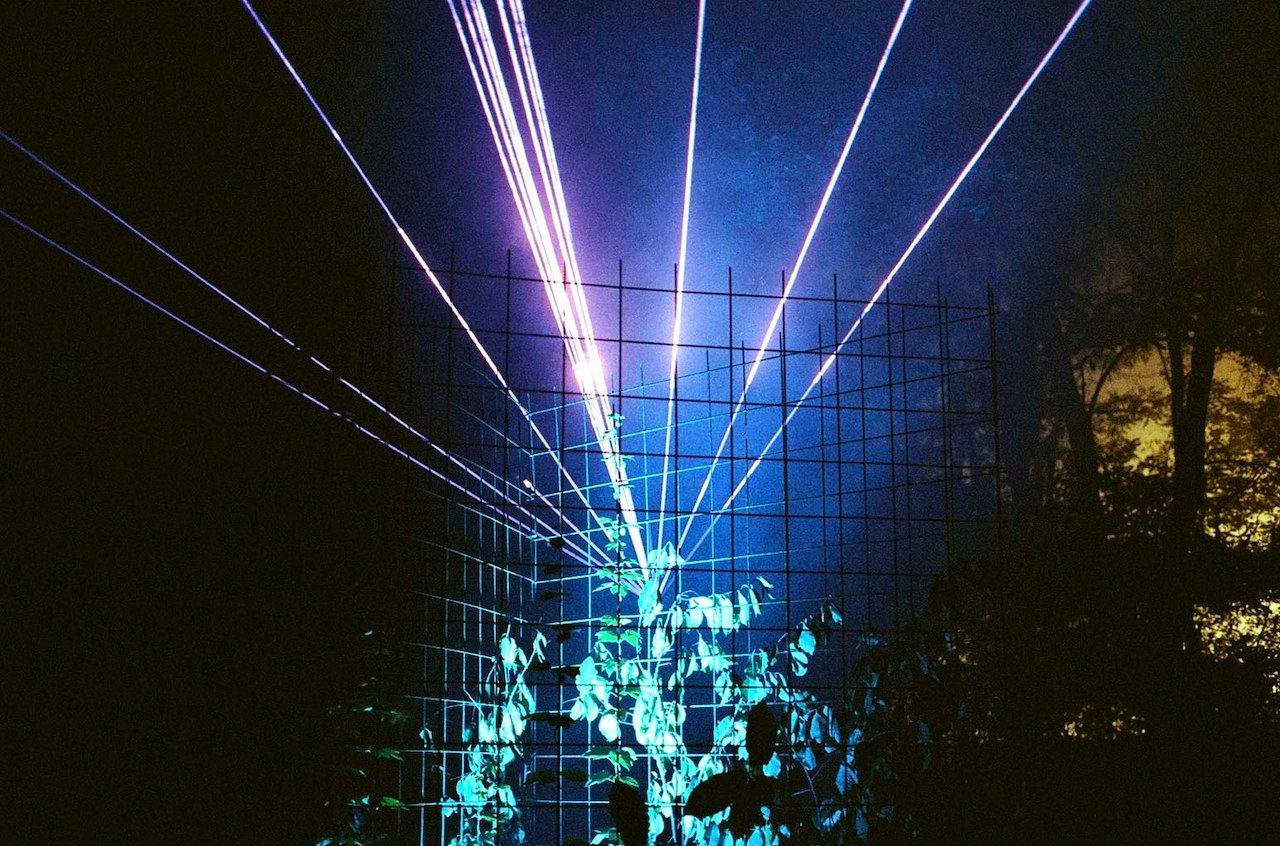 Draaimolen's lineup was brilliant to the point of overwhelming—the choice of headliners included Four Tet, Marcel Dettmann, Helena Hauff, Objekt & Ezra Miller and John Talabot. The festival has always been a one-day event (their 2014 debut, headlined by Jeff Mills, had just 12 artists on the bill), but, moving forward, maybe it could benefit from expanding its programme across a full weekend. If this year is anything to go by, let's hope they've found a permanent home in MOB Complex. Photo credit / Rafael Dimiioniatis
Draaimolen's lineup was brilliant to the point of overwhelming—the choice of headliners included Four Tet, Marcel Dettmann, Helena Hauff, Objekt & Ezra Miller and John Talabot. The festival has always been a one-day event (their 2014 debut, headlined by Jeff Mills, had just 12 artists on the bill), but, moving forward, maybe it could benefit from expanding its programme across a full weekend. If this year is anything to go by, let's hope they've found a permanent home in MOB Complex. Photo credit / Rafael Dimiioniatis